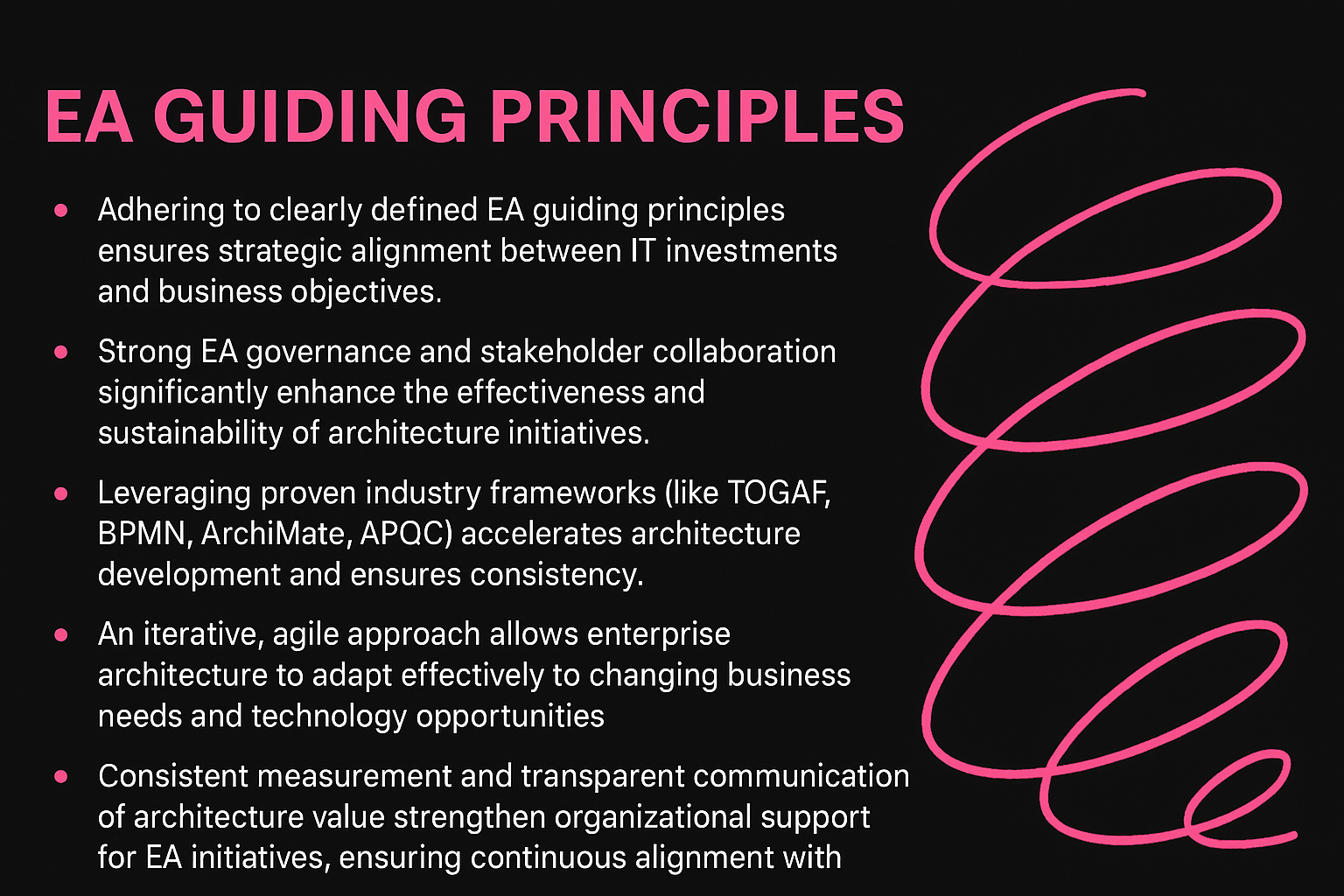Lesson Title:
Guiding Principles and Best Practices of SAP Enterprise Architecture Projects
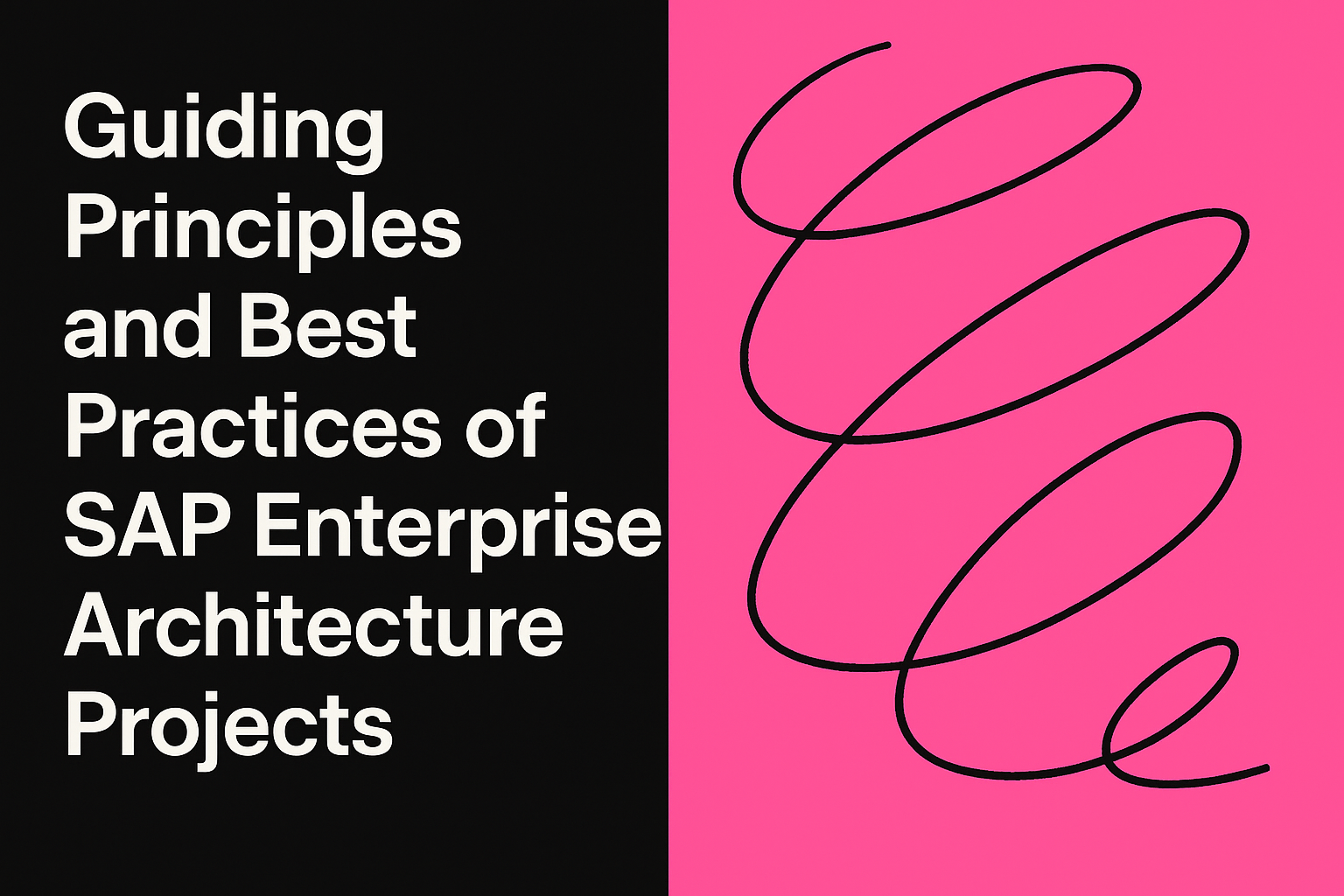
Lesson Description:
Welcome back! In this SAP Enterprise Architecture Bootcamp session, we’ll explore the essential guiding principles and best practices that underpin successful Enterprise Architecture (EA) programs. You’ll learn how EA translates business vision and strategy into coherent and actionable technology plans. Using Nestlé’s real-world SAP-driven transformation as our primary case study, we’ll clarify how aligning architecture with business goals, enforcing standards, and fostering collaboration can effectively support long-term strategic objectives.
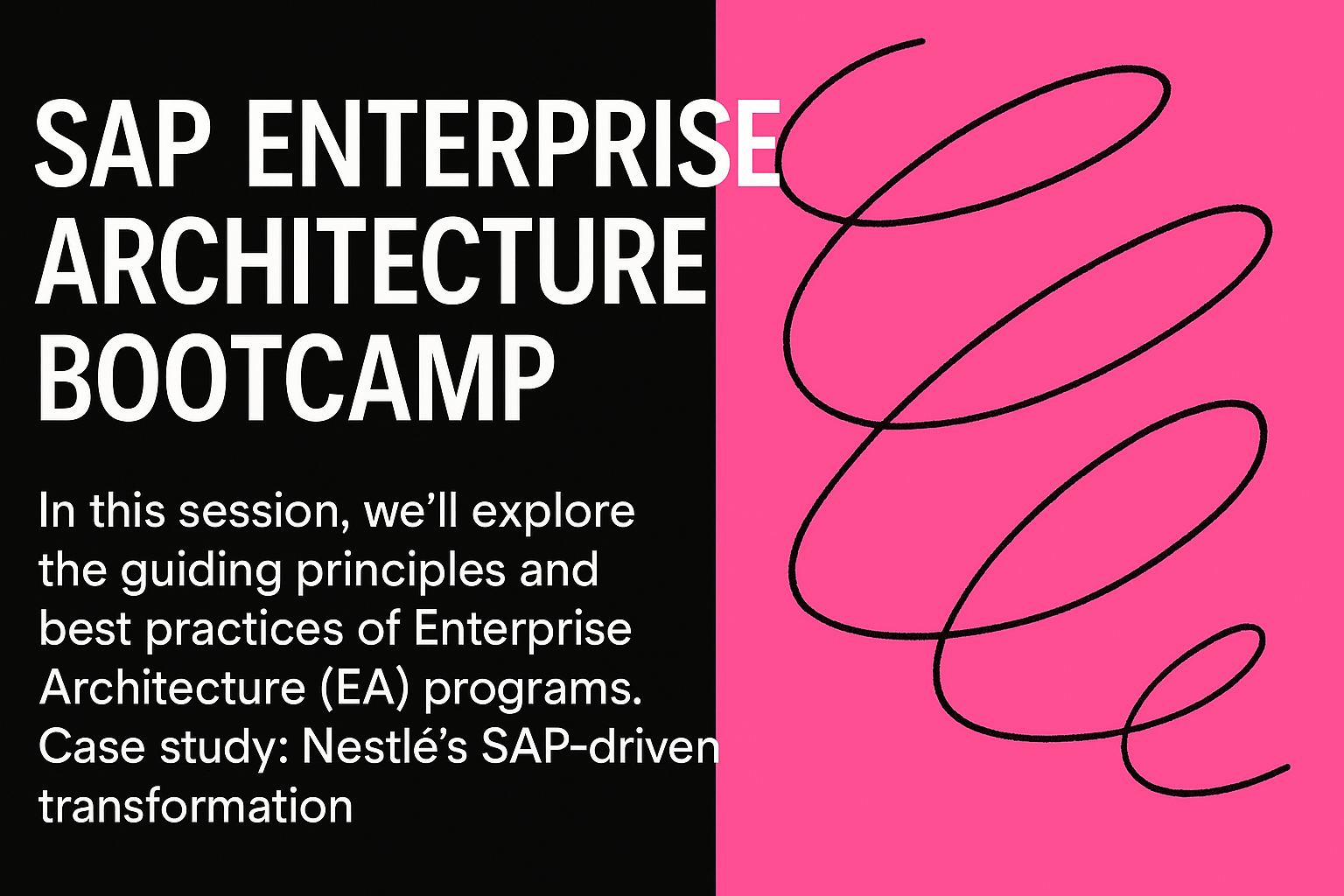
Lesson Learning Objectives:
-
Understand key guiding principles and best practices foundational to effective SAP Enterprise Architecture.
-
Recognize how these principles ensure alignment between IT initiatives and strategic business goals.
-
Learn best practices for managing and evolving SAP architecture in complex organizational settings.
-
Explore Nestlé’s practical application of EA principles, including governance, stakeholder engagement, and standardization.
-
Identify actionable steps to implement EA best practices within your own organization.
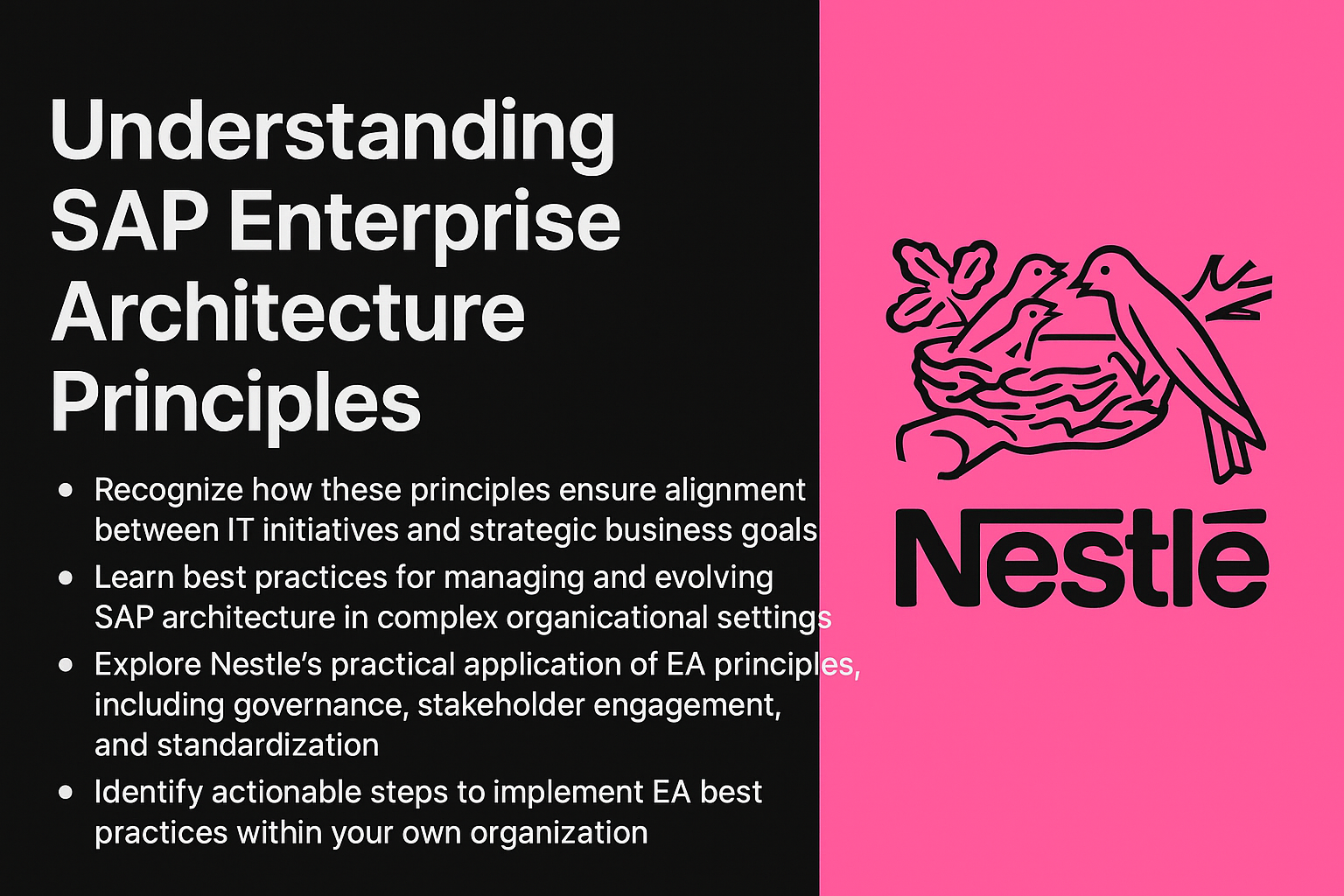
Terminology:
-
Enterprise Architecture (EA): Discipline aligning business strategy with IT infrastructure and capabilities.
-
Governance: Structured oversight and management ensuring adherence to architectural standards.
-
GLOBE Program: Nestlé’s global SAP implementation for process standardization and system integration.
-
SAP S/4HANA: SAP’s next-generation ERP suite supporting real-time analytics and streamlined processes.
-
BPMN (Business Process Model and Notation): Standard graphical notation used to document business processes.
-
SAP Signavio: Tool used for process modeling and management within SAP environments.
-
Architecture Principles: High-level rules guiding consistent and strategic architecture decision-making.

Lesson Key Points:
-
EA principles provide strategic guidance, ensuring IT initiatives are consistently aligned with business goals.
-
Clear governance structures and defined architecture principles reduce complexity, improve agility, and ensure sustainable architecture practices.
-
Leveraging established frameworks and industry-proven models accelerates architecture development and fosters credibility.
-
Stakeholder collaboration and common language are critical for effective EA communication and adoption.
-
Continuous measurement and communication of EA value solidifies stakeholder support and alignment with strategic business objectives.
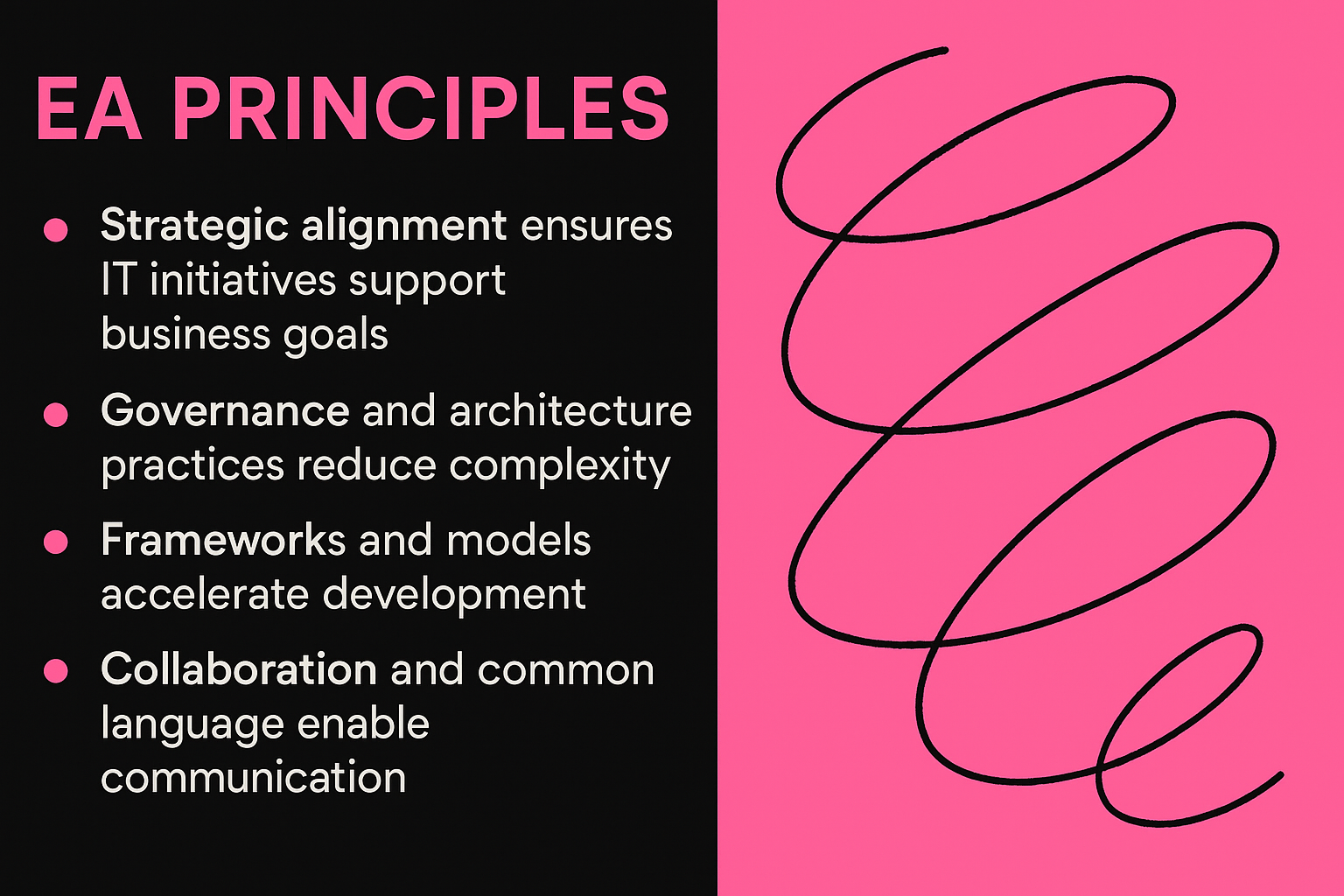
Lesson Summary:
In this lesson, we examined the essential guiding principles and best practices underlying effective SAP Enterprise Architecture. We highlighted critical areas including business alignment, defined architectural principles, stakeholder engagement, leveraging established frameworks, iterative and agile architecture approaches, and measuring and communicating EA value. Nestlé’s experience vividly illustrated these principles, demonstrating the powerful impact of rigorous governance and standardization in managing a large-scale SAP transformation. Ultimately, these practices form the foundation of a sustainable and effective EA program capable of delivering measurable business outcomes.
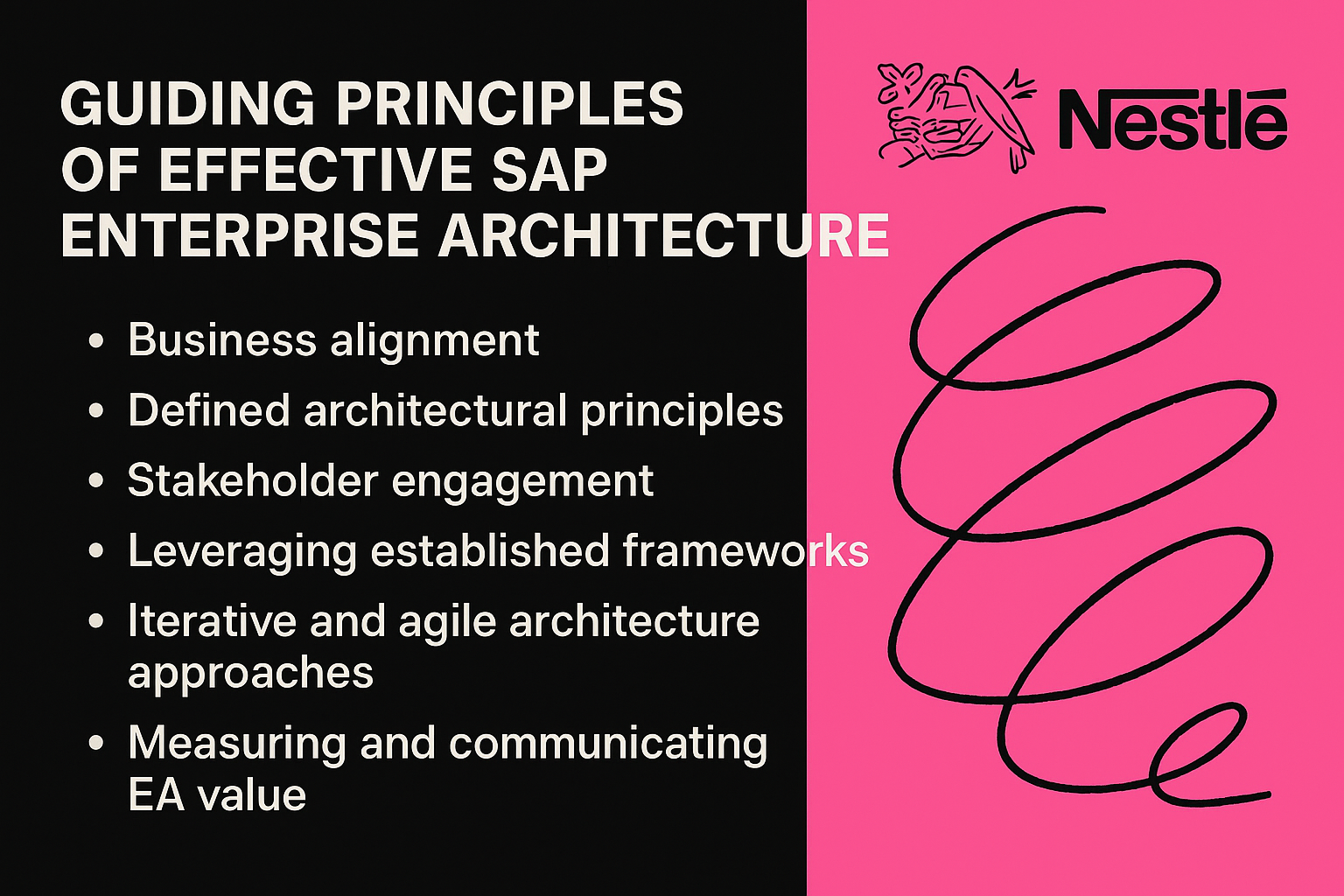
Lesson Takeaways:
-
Adhering to clearly defined EA guiding principles ensures strategic alignment between IT investments and business objectives.
-
Strong EA governance and stakeholder collaboration significantly enhance the effectiveness and sustainability of architecture initiatives.
-
Leveraging proven industry frameworks (like TOGAF, BPMN, ArchiMate, APQC) accelerates architecture development and ensures consistency.
-
An iterative, agile approach allows enterprise architecture to adapt effectively to changing business needs and technology opportunities.
-
Consistent measurement and transparent communication of architecture value strengthen organizational support for EA initiatives, ensuring continuous alignment with business strategy and objectives.
